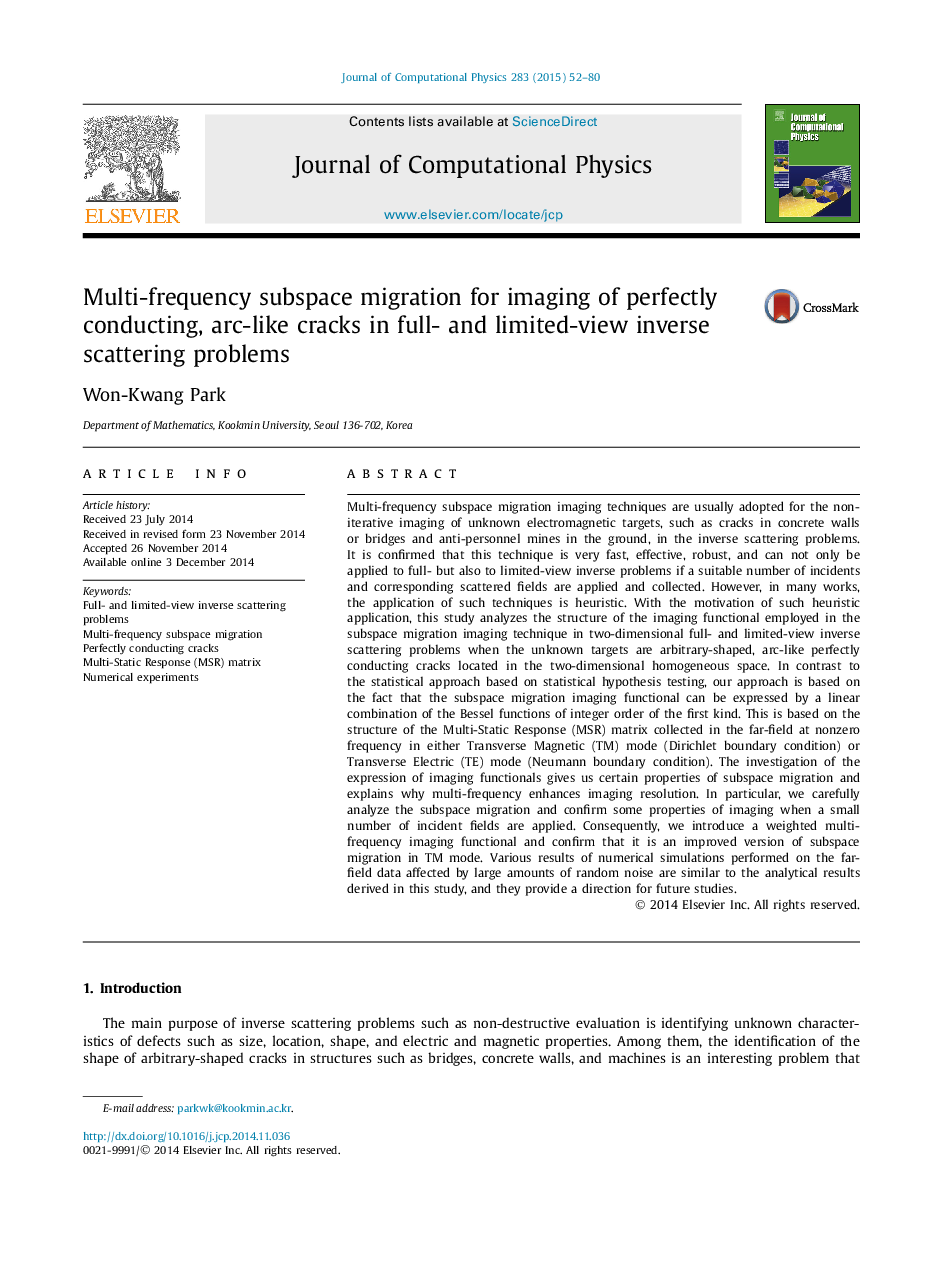| Article ID | Journal | Published Year | Pages | File Type |
|---|---|---|---|---|
| 6931797 | Journal of Computational Physics | 2015 | 29 Pages |
Abstract
Multi-frequency subspace migration imaging techniques are usually adopted for the non-iterative imaging of unknown electromagnetic targets, such as cracks in concrete walls or bridges and anti-personnel mines in the ground, in the inverse scattering problems. It is confirmed that this technique is very fast, effective, robust, and can not only be applied to full- but also to limited-view inverse problems if a suitable number of incidents and corresponding scattered fields are applied and collected. However, in many works, the application of such techniques is heuristic. With the motivation of such heuristic application, this study analyzes the structure of the imaging functional employed in the subspace migration imaging technique in two-dimensional full- and limited-view inverse scattering problems when the unknown targets are arbitrary-shaped, arc-like perfectly conducting cracks located in the two-dimensional homogeneous space. In contrast to the statistical approach based on statistical hypothesis testing, our approach is based on the fact that the subspace migration imaging functional can be expressed by a linear combination of the Bessel functions of integer order of the first kind. This is based on the structure of the Multi-Static Response (MSR) matrix collected in the far-field at nonzero frequency in either Transverse Magnetic (TM) mode (Dirichlet boundary condition) or Transverse Electric (TE) mode (Neumann boundary condition). The investigation of the expression of imaging functionals gives us certain properties of subspace migration and explains why multi-frequency enhances imaging resolution. In particular, we carefully analyze the subspace migration and confirm some properties of imaging when a small number of incident fields are applied. Consequently, we introduce a weighted multi-frequency imaging functional and confirm that it is an improved version of subspace migration in TM mode. Various results of numerical simulations performed on the far-field data affected by large amounts of random noise are similar to the analytical results derived in this study, and they provide a direction for future studies.
Related Topics
Physical Sciences and Engineering
Computer Science
Computer Science Applications
Authors
Won-Kwang Park,
